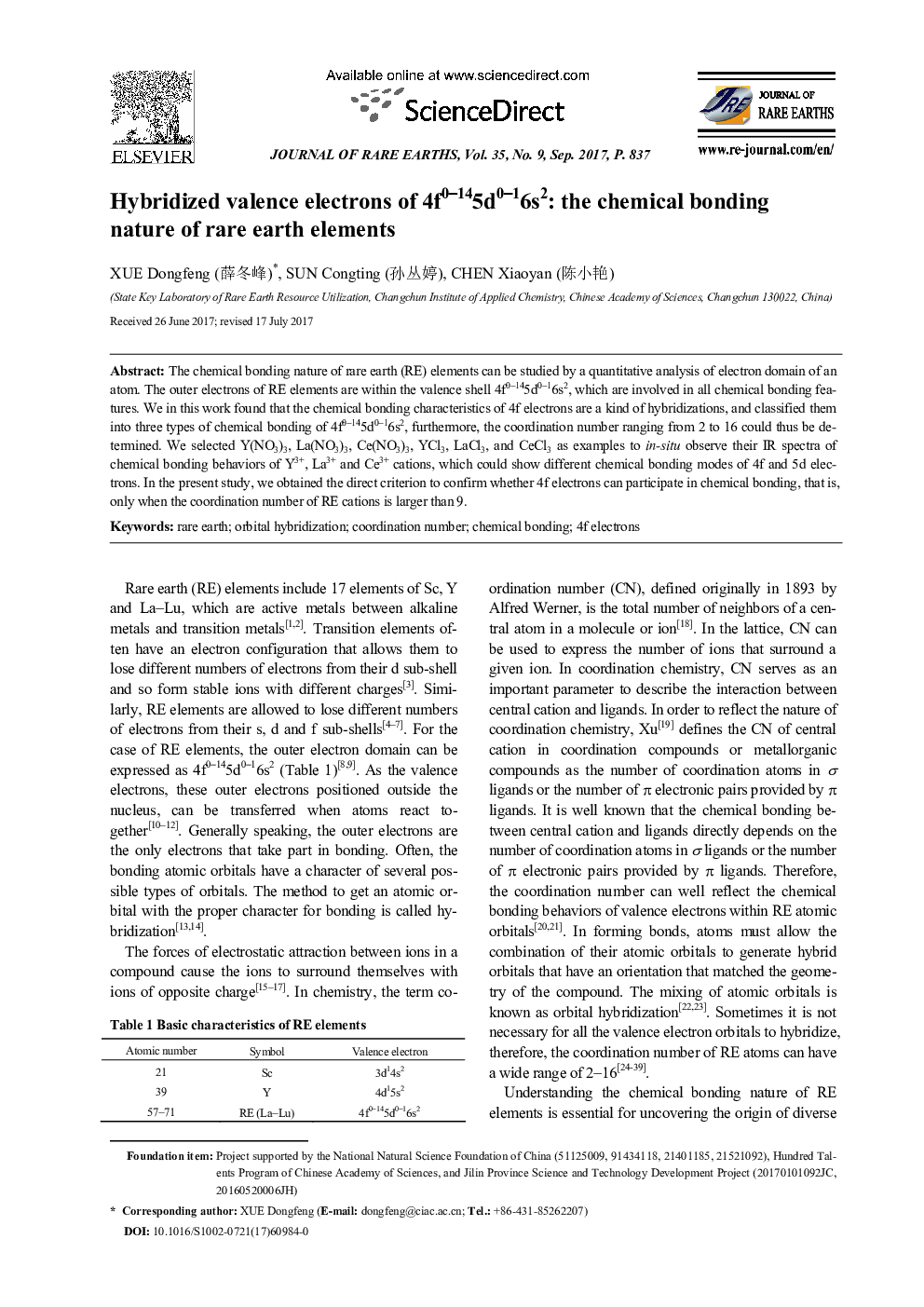| Article ID | Journal | Published Year | Pages | File Type |
|---|---|---|---|---|
| 7697507 | Journal of Rare Earths | 2017 | 7 Pages |
Abstract
The chemical bonding nature of rare earth (RE) elements can be studied by a quantitative analysis of electron domain of an atom. The outer electrons of RE elements are within the valence shell 4f0-145d0-16s2, which are involved in all chemical bonding features. We in this work found that the chemical bonding characteristics of 4f electrons are a kind of hybridizations, and classified them into three types of chemical bonding of 4f0-145d0-16s2, furthermore, the coordination number ranging from 2 to 16 could thus be determined. We selected Y(NO3)3, La(NO3)3, Ce(NO3)3, YCl3, LaCl3, and CeCl3 as examples to in-situ observe their IR spectra of chemical bonding behaviors of Y3+, La3+ and Ce3+ cations, which could show different chemical bonding modes of 4f and 5d electrons. In the present study, we obtained the direct criterion to confirm whether 4f electrons can participate in chemical bonding, that is, only when the coordination number of RE cations is larger than 9.
Related Topics
Physical Sciences and Engineering
Chemistry
Chemistry (General)
Authors
Dongfeng (èå¬å³°), Congting (åä¸å©·), Xiaoyan (éå°è³),
